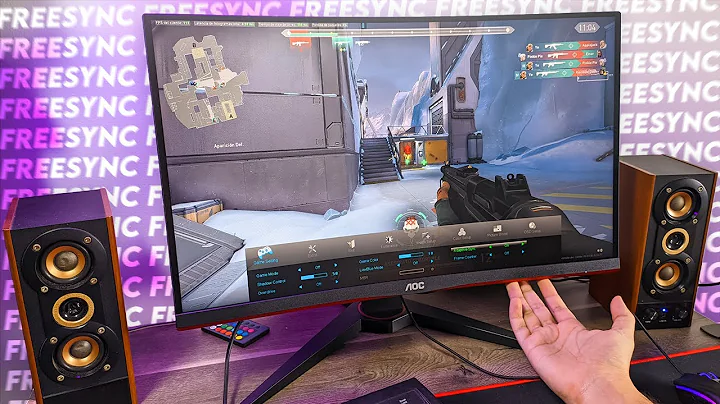Unveiling the Untold Story of Nvidia's Forgotten Flagship
Table of Contents
- Introduction
- The Invidia GeForce 9800 GTX+: A Forgotten Flagship
- The History of the 8800 and 9800 Series
- The Competition with AMD's HD 4000 Series
- The Cost Savings and Performance of the GTX+ Card
- The Confusing Naming Scheme
- Overclocking and Performance
- Gaming Performance of the GeForce 9800 GTX+
- GTA 5
- Fable: The Lost Chapters
- CS:GO
- BeamNG.drive
- Civilization 5
- Skyrim
- Banished
- Minecraft
- Crysis
- Benchmarking with 3DMark
- Conclusion
🏆 Highlights
- The GeForce 9800 GTX+ is a forgotten flagship that utilized the 55 nanometer process and offered impressive performance for its time.
- It faced tough competition from AMD's HD 4000 series, which provided better value for consumers.
- The GTX+ card was a cost-saving measure for Nvidia, using a smaller 55 nanometer process and an older architecture.
- Despite its age, the GeForce 9800 GTX+ can still handle modern games at playable framerates, making it a great option for retro gaming enthusiasts.
Introduction
In the world of graphics cards, certain models become legendary for their impact on the market. However, amidst the fame and recognition, some flagships have been forgotten. One such example is the Invidia GeForce 9800 GTX+. This often overlooked card was released in the summer of 2008 and offered impressive performance and features that were ahead of its time. In this article, we will delve into the history of the 8800 and 9800 series, explore the competition it faced from AMD's HD 4000 series, analyze the cost savings and performance of the GTX+ card, and evaluate its gaming performance and overclocking capabilities. So, let's dive in and uncover the untold story of the GeForce 9800 GTX+.
The Invidia GeForce 9800 GTX+: A Forgotten Flagship
The Invidia GeForce 9800 GTX+ was a flagship graphics card that introduced several groundbreaking features. It was one of the first cards to utilize the 55 nanometer manufacturing process, allowing for improved power efficiency and performance. With its 128 CUDA cores and 512 megabytes of GDDR3 based VRAM, the GTX+ was a little powerhouse capable of delivering smooth gameplay and stunning visuals.
The History of the 8800 and 9800 Series
To understand the significance of the GeForce 9800 GTX+, we need to take a step back and look at the history of the 8800 and 9800 series. The 8800 series, particularly the 8800 GT X, was a Game-changer in the graphics card market. It offered excellent performance, even on demanding games like Crysis, and became a popular choice for gamers. The series was further expanded with variants like GT, GTS, and GTX, catering to different budget and performance needs.
The Competition with AMD's HD 4000 Series
The release of the GeForce 9800 GTX+ coincided with the launch of AMD's HD 4000 series, which proved to be a tough competition for Nvidia. The HD 4000 cards offered better value for consumers, with comparable performance at a lower price point. Moreover, AMD was able to produce these cards more cost-effectively due to their use of a 65 nanometer manufacturing process, which gave them a larger profit margin.
The Cost Savings and Performance of the GTX+ Card
In an attempt to stay competitive, Nvidia introduced the GTX+ as a cost-saving measure. By using a smaller 55 nanometer process and an older architecture, they were able to reduce production costs and offer the card at a more affordable price. While reviewers praised the GTX+ for its overclocking capabilities, it failed to capture the attention of consumers who preferred the cheaper alternatives from AMD.
The Confusing Naming Scheme
The naming scheme of the GeForce 9800 GTX+ added to the confusion surrounding the card. With similar names and performance within a margin of each other, the 8800, 9800, and 9800 GTX+ cards created a perplexing array of options for buyers. This lack of Clarity made it difficult for the GTX+ to stand out in the market.
Overclocking and Performance
One of the highlights of the GeForce 9800 GTX+ was its overclocking potential. Reviewers praised its ability to be pushed to high clocks, providing an enjoyable gaming experience. However, the lack of adequate cooling in the cheaper models limited the overclocking capabilities for most users. Additionally, the performance gains achieved through overclocking were often negated by the superior out-of-the-box performance of competing AMD cards.
Gaming Performance of the GeForce 9800 GTX+
Despite its age, the GeForce 9800 GTX+ still holds up well in gaming performance. In our tests, popular titles like GTA 5, Fable: The Lost Chapters, CS:GO, BeamNG.drive, Civilization 5, Skyrim, Banished, Minecraft, and Crysis ran smoothly at respectable settings and resolutions. The card proved to be a capable performer, offering an enjoyable gaming experience even in modern titles.
Benchmarking with 3DMark
To further assess the performance capabilities of the GeForce 9800 GTX+, we conducted benchmark tests using 3DMark. The card consistently delivered decent scores, demonstrating its ability to handle demanding tasks. Despite its weaker cooling setup, the GTX+ maintained stable temperatures and showed potential for further overclocking.
Conclusion
In conclusion, the Invidia GeForce 9800 GTX+ may be a forgotten flagship, but its legacy lives on. While it faced tough competition from AMD's HD 4000 series, the GTX+ offered impressive performance and has aged more elegantly over time. With its ability to handle modern games at playable framerates, the GeForce 9800 GTX+ remains a valuable option for retro gaming enthusiasts. Its cost-effectiveness and overclocking potential add to its appeal, making it a reliable choice for those seeking a high-end retro graphics card.
Resources:
 WHY YOU SHOULD CHOOSE TOOLIFY
WHY YOU SHOULD CHOOSE TOOLIFY


































